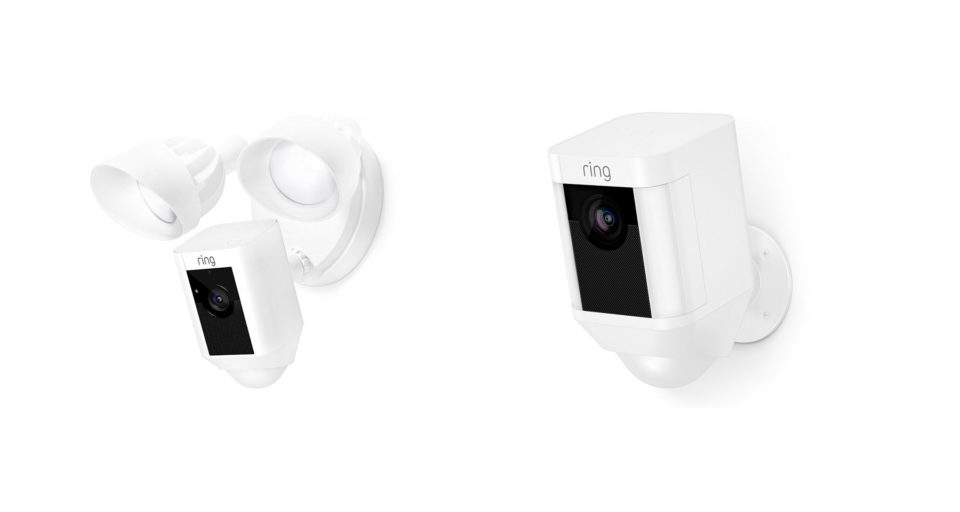Home security services didn’t pay any attention to everything else that many people nowadays have in their homes (things like voice-activated speakers or automatic lights). Apart from warning lighting and the odd front porch detector or monitor, many potential customers have avoided home security systems for fear of being clunky, frustrating, or unreliable. That was until Ring stepped in. Marketing itself as an easy, clear, and modern home security company, Ring has undoubtedly built the best range of cameras and solutions for home security to ever hit the market. Customers have been seriously impressed by their Ring purchases and are often willing to suggest them, opting for lightweight yet elegant installation and configuration method. Here are the main differences between the Floodlight cameras and the Ring Spotlight.
- Vision during the night (night vision!). The Ring Spotlight and Ring Floodlight, as mentioned earlier, have the very same camera and therefore give the same level of footage both during the daytime and at night. However, it is worth noting that enhanced night vision, which offers full color, is available only when either device is being connected to the mains, wired power. Any computer operating on battery power will only show black and white videos during the night.
- Potential methods. Given their numerous parallels, there are also a few variations in the Ring Spotlight and Ring Floodlight, where one is very simply more mature or evolved than the other in specific ways. The Ring Floodlight is limited to wired, powered by the mains, and as such, has more restrictions on where to place it. The mains power is the more stable, reliable power source for both the Ring Spotlight and the Ring Floodlight, but for those who want full versatility, the Ring Spotlight certainly provides more.
- The Perception of Movement. Motion detection is a critical component of any home security system and is often ignored by many consumers by thinking they won’t need it. As for the product line from Ring, there are two types of motion detection available depending on which model you are using standard and advanced. With wired computers, only sophisticated motion tracking is necessary as it senses motion in the video footage itself. Use face and body recognition technologies, human beings, and their activity can be identified and recorded, but it can also appear to disregard busy streets or meaningless actions. It requires more power to maintain because of how advanced it is.
- Zoom interactive. Remote zooming is another feature of home security cameras that many consumers ignore. With all Ring’s camera providing outstanding video quality with crisp and clear photos, adding digital zoom can give you an additional monitoring feature. Both of the Ring Spotlight and the Ring Floodlight has an enabled night vision, only that, the Ring Floodlight provides you with digital zoom, allowing you to have more clarity when you need it most.
- LED Screens. One of the critical reasons for the popularity of these two unique Ring security cameras is the fact that they include on-camera illumination for extra protection (hence, first, this whole Ring Floodlight vs. Ring Spotlight debate). Both the Right Floodlight and the Ring Spotlight do a pretty decent job of illuminating your yard or front porch, but it must be concluded that the Ring Floodlight offers much brighter light, with a whopping 1,800 lumens, versus the 375 lumens (or 300 if running from batteries) of the Ring Spotlight.
- One small factor that consumers sometimes neglect the value of-operating temperature may or may not be the difference between working the camera when you need it most. All Ring’s cameras are weatherproof and, therefore, ideal for various climatic and temperature conditions. It should get remembered that when battery-powered, the Ring Spotlight can encounter problems in cold regions as small as-5 degrees Fahrenheit and the device may not function at all. For those who reside in colder areas, or occasionally experience extreme temperature drops, the wired version of either the two will most likely make you better off.
- As planned, both the Ring Spotlight and the Right Floodlight come with a variety of compatible attachments–some are pretty essential essentials. In contrast, others provide a customized feature based on what your tastes and needs are. The Ring Solar Panel is the most common of these, enabling most battery-powered ring devices to run continuously without having to recharge. This is exceptionally convenient because, at times, it will discourage you from recharging your battery and save you difficulty and energy.
- It is supplying power. This is the choice most consumers seem to be grappling with-going with the flexibility of a portable camera vs. preferring a wired model’s durability and accuracy. The first decision you have to consider is how or where you want your device to get installed, because if it’s out of reach from a power outlet or source, you may have to choose a battery-powered unit.
- For tactical and logistical reasons, home security devices are there, and that’s why people rarely let aesthetics have much effect on the layout or product they want. It is worth noting that the Ring Spotlight and the Ring Floodlight have entirely different appearances for those few of the individuals who are concerned by this. When stated, it’s best to ignore how they feel, when home security cameras weren’t made to look perfect, but if that’s your problem, the Spotlight seems probably the best.
Conclusion
The impressive camera quality, consistency, reputation, and range of additional features make it clear that both the Ring Floodlight and Ring Spotlight are competent camera–neither is likely to be disappointing. But where the Ring Spotlight has the option of battery power, with better aesthetics, the Ring Floodlight is the more reliable model, with better night vision, and a higher lumen rating for surveillance or warning when emitting lights. It all boils down to you what to choose between the two given the differences between Ring Floodlight vs Spotlight.

